After her historic win at the Tokyo Olympics, making her the only women athlete to win medals in two back-to-back Olympics, PV Sindhu, Bridgestone India’s brand ambassador visited the company’s headquarters and plant at Pune recently. This was her first visit to the plant after she was appointed the company’s brand ambassador in 2017.
Parag Satpute, Managing Director, Bridgestone India, said, “Bridgestone India is committed towards women in sports. Three out of our four brand ambassadors are women. We are also focused on sponsoring training and currently, thirty-two athletes are benefiting from Bridgestone sponsored training under renowned coaches. We are confident that these athletes will also bring laurels to the country.”
“I am honoured to be associated with Bridgestone India and particularly to be the organization’s first brand ambassador. Bridgestone has a strong sports lineage which is also strengthened with their Worldwide Olympic Partnership and their commitment to furthering the cause of Indian sports. Women representation in sports and the winning scores can increase if Indian sportswomen get the opportunity of professional coaching and I am glad that Bridgestone is working towards that end,” averred Sindhu. (TT)
- Juuli Raatikainen
- tyre testing
- winter testing
- CEAT
- racing
- simulation
- AI
- ML
Breaking Barriers: Women Drive Change In Tyre Testing
- by Nilesh Wadhwa
- April 16, 2025

In a candid interaction with Tyre Trends, freelance tyre testing specialist Juuli Raatikainen shares her views on the intricacies of tyre testing, the role of women in the industry, simulation and the road ahead, reports Nilesh Wadhwa.
“Women have been driving cars for decades, so why not be part of the tyre and automotive testing industry? I believe the bigger question and challenge is how the industry (tyre and automotive) can think beyond gender. The tyre testing industry is huge, but there are not many direct studies to learn about it and become part of it,” remarked Juuli Raatikainen, the 28-year-old test driver and mechanic who has been offering freelance services for tyre testing for the last four years.
INITIAL JOURNEY
It is no secret that tyre testing is not a widely known field. A simple internet search for the world’s top 10 racers or motorsport celebrities will return mostly male sports personalities.
For Raatikainen, the journey into tyre testing began as a test assistant in Lapland, Finland.
 “I started my career as a test assistant. My passion for testing grew, and I was eager to learn more, working hard to gain knowledge. My efforts were noticed, and I received the necessary support. The decision to start my own company and operate as a freelancer was quite easy for me. In the first two years, I focused on gaining experience, testing time and learning as much as possible. I wanted to see tyre testing from different angles, companies and drivers. Today, I am happy to say that I have experience in tyre testing operations as a tyre mechanic, test assistant, instrumentation specialist and objective test driver. I am also engaged in testing tyres and vehicles for events and magazines,” she shared.
“I started my career as a test assistant. My passion for testing grew, and I was eager to learn more, working hard to gain knowledge. My efforts were noticed, and I received the necessary support. The decision to start my own company and operate as a freelancer was quite easy for me. In the first two years, I focused on gaining experience, testing time and learning as much as possible. I wanted to see tyre testing from different angles, companies and drivers. Today, I am happy to say that I have experience in tyre testing operations as a tyre mechanic, test assistant, instrumentation specialist and objective test driver. I am also engaged in testing tyres and vehicles for events and magazines,” she shared.
THE EVOLVING ROLE OF TYRE TESTING
Tyre testing has evolved over the years, from physical and mechanical assessments to indoor methods, including Tyre-in-the-Loop (TiL) testing, a form of hardware-in-the-loop (HiL) simulation. However, despite technological advancements, many tests still need to be conducted in real-world conditions to determine optimal solutions.
For example, a vehicle travelling in a sandy environment at a particular tyre pressure will have different braking times even at the same speed. The steering response, traction at different corners and slippage will also vary.
“I find simulators to be a good tool for all drivers and for hardware development. However, no one knows exactly how they will impact testing in the future. Many questions remain, and some conditions and types of tests cannot yet be simulated accurately. As a test driver, my main expertise is in winter testing. From my experience, winter conditions are particularly difficult to replicate artificially. Winter is a living, breathing element of nature, making it hard to forecast, as conditions can change very quickly,” she explained.
For tyre manufacturers, real-world testing is essential for finding the right conditions and weather. For instance, summer tyres cannot be tested in winter, nor can Nordic spike tyres be tested in warm conditions. “It is a challenge for companies to run tyre tests year-round and across different locations. Agility is key,” Raatikainen added.
Tyre testing falls into two main categories: objective and subjective. Objective testing relies on instruments to assess tyre performance, while subjective testing depends on the driver’s evaluation.
“As a freelancer, I work across different processes. Transparency with clients is my priority. It’s about what I do and how I do it. Trust is one of the key values I bring to the table,” she explained.
KEY LEARNINGS & TYRE SAFETY
As a test driver, Raatikainen has firsthand experience of how tyre choices impact performance and safety in different conditions.
“Statistics show that one of the most common mistakes drivers make is using the wrong type of tyres for their environment and weather conditions. When selecting tyres, it’s crucial to consider two key questions: Where will I be driving, and in what weather conditions? These simple considerations can significantly impact safety,” she added.
Most tyres have a wear indicator on the tread to signal when they need replacement, but these warnings are often ignored.
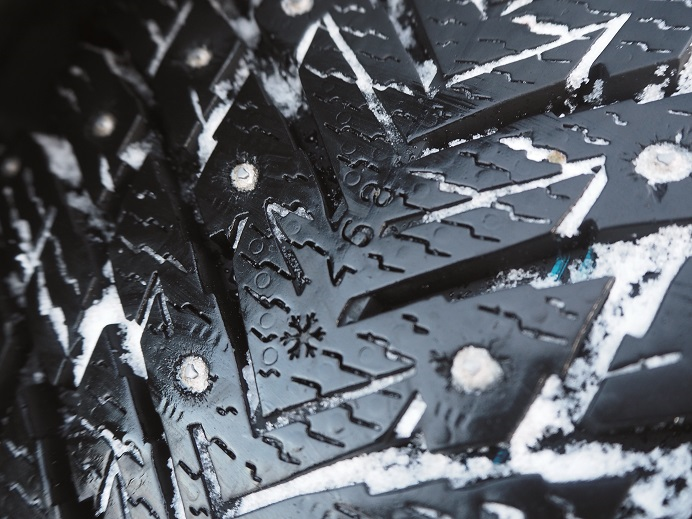
According to data from the Ministry of Road Transport & Highways (MoRTH), India recorded 461,312 road accidents in 2022, resulting in 155,781 fatal cases. Despite tyres having a significant influence on vehicular control, they are rarely cited as a primary cause of accidents.
When replacing tyres, it is also crucial to check their manufacturing date. Raatikainen emphasises that even a ‘new’ tyre must be evaluated based on its production date, as rubber degrades over time, regardless of use.
“Regularly checking tyre condition is just as important as choosing the right type. Ensure tyres have adequate tread depth, are free from cracks or bulges and are properly inflated. These simple maintenance habits can extend tyre life and improve safety,” she added.
FUTURE TRENDS IMPACTING THE TYRE INDUSTRY
New-age vehicles and tightening regulations are pushing industry players towards sustainability and reducing their carbon footprint.
For the tyre industry, environmentally friendly sourcing, production and materials remain key focus areas. From a tester’s perspective, what does the future hold?
“I am excited about advancements in simulation technology and their impact on the tyre industry. Another major trend is the growing emphasis on indoor testing for winter tyres, which addresses unpredictable weather challenges and helps distribute testing workloads more efficiently,” she said.
A third emerging trend is smart tyre technology.
“While modern vehicles are equipped with advanced systems, tyres have yet to integrate similar innovations. The questions of when this technology will arrive, how it will develop and what features it will bring are incredibly exciting. I look forward to seeing how smart tyres will enhance safety, performance and the driving experience,” Raatikainen concluded.
- MegaRide
- VESevo
- Flavio Farroni
- Aleksandr Sakhnevych
- Andrea Genovese
- weaRIDE
- tyre simulation
- motorsport
- RIDEsuite
Megaride: From Academic Lab To Global Tyre Technology Innovator
- by TT News
- April 16, 2025

Led by CEO Flavio Farroni, the company has expanded into what he describes as a ‘MegaRide holding’, comprising multiple specialised businesses, each targeting different segments of the automotive technology sector.
“We embrace an unconventional approach to startup building: we invest in organic and gradual growth, which keeps us independent from private funding and allows us to reinvest our revenues into the team and R&D projects fully,” says Farroni, who co-founded the company after conducting tyre research at the university.
FROM ACADEMIA TO INDUSTRY DISRUPTOR
MegaRide’s journey represents a new technology transfer model from academia to industry. Farroni acknowledges that this transition wasn’t without challenges.
“The main leadership challenges we faced along our journey were, first and foremost, gaining acceptance for our role as researcher-entrepreneurs – researchpreneurs – both within academia and in the market. In the beginning, neither was sufficiently advanced to recognise such a new and competitive figure,” Farroni explains.
This ‘researchpreneur’ model has since become central to MegaRide’s competitive advantage. The company maintains close ties with universities and ensures a continuous pipeline of cutting-edge research that feeds into commercial applications.
“Our deep synergy with universities makes research and innovation our core mission. This allows us to explore methodologies and techniques that may not immediately apply to current products but lay the groundwork for future advancements,” explains Aleksandr Sakhnevych, MegaRide’s Chief Technology Officer.
ITALIAN TECH FIRM REVOLUTIONISES TYRE SCIENCE WITH PHYSICS-BASED SIMULATION
In a nondescript business park on the outskirts of Naples, a team of researchers-turned-entrepreneurs is quietly revolutionising how the world’s leading vehicle manufacturers and motorsport teams understand tyre performance. MegaRide, founded by academic researchers from the University of Naples Federico II, has grown from a university spinoff to one of the most innovative players in automotive simulation technology.
The company specialises in physics-based modelling software that predicts tyre behaviour with unprecedented accuracy – crucial information for both racing teams seeking competitive advantages measured in milliseconds and vehicle manufacturers designing safer, more efficient cars for everyday drivers.
THE TECHNOLOGY: DIGITAL TWINS FOR TYRES
These physics-based models simulate how tyres behave under different conditions, predicting temperature changes, grip levels and wear patterns in real time with an accuracy that was previously impossible.

One of its most innovative products, weaRIDE, enables real-time tyre tread wear and chemical degradation simulation. This technology is particularly significant for electric vehicles, whose instant torque delivery creates new challenges for tyre durability.
“We were the first to develop a commercial thermal model for tyres, the first to create a multiphysics Pacejka-based model, and today, we are the first to introduce a wear and degradation model, weaRIDE, internationally awarded for its innovation. We try to be always a step ahead, and scientific research is our ‘secret weapon’,” Farroni says.
Sakhnevych explains that ensuring model accuracy across varied real-world conditions requires a multifaceted approach: “MegaRide ensures the accuracy and reliability of the weaRIDE model through a multifaceted approach. First, there is a continuous effort to enhance the physical fidelity of the model, leveraging a strategic synergy with universities and research institutions.”
He adds, “Additionally, a key focus is placed on improving data processing methodologies. Tyre models often face scrutiny due to the limitations in predictive accuracy, which are strongly influenced by the quality of the calibration data.”
FROM SIMULATION TO MEASUREMENT: THE VESEVO SPINOFF
In 2018, MegaRide expanded its footprint by spinning off VESevo, a company focused on developing innovative testing equipment for tyre materials. VESevo’s flagship product enables non-destructive testing of tyre compounds, providing detailed mechanical property data previously unavailable without destroying the tyre.
Andrea Genovese, CEO of VESevo, explains how the technology has evolved from its motorsport origins: “VESevo is evolving its motorsport-derived technology to enhance industrial applications, leveraging its versatility for real-time quality control in tyre manufacturing. Its non-destructive, non-invasive and rapid-testing capabilities allow each tyre to be analysed directly on the production line.”
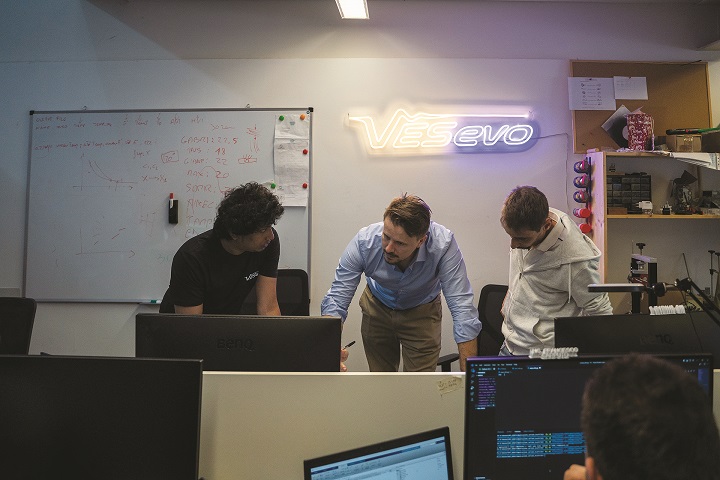
This represents a significant shift in quality control for tyre manufacturers. “This innovation enables mechanical property testing to be performed not just on a sample basis but on the entire production, guaranteeing comprehensive quality assessment,” Genovese adds.
However, VESevo has faced regulatory headwinds in motorsport, particularly after the Fédération Internationale de l’Automobile (FIA) introduced rules limiting the use of its technology in Formula 2 and Formula 3.
“Honestly, we were surprised by this regulatory change, as motorsport has always been a driving force in introducing innovations, especially when they enhance performance, spectacle and safety, benefiting all stakeholders involved,” Genovese admits.
Rather than seeing this as a setback, VESevo has focused more on industrial applications. “By broadening our reach into new applications, we are not just navigating these changes, but we are turning them into opportunities to drive innovation forward,” Genovese says.
STRATEGIC ACQUISITIONS AND GROWTH
MegaRide has augmented its technological capabilities through strategic acquisitions, including the 2022 purchase of Wriggle Solutions’ intellectual property. This acquisition bolstered MegaRide’s capabilities in real-time tyre wear monitoring.
“The acquisition of Wriggle Solutions’ intellectual property in 2022 has expanded MegaRide’s strategic line, accelerating the transition from purely simulation-based technologies to real-time, onboard vehicle sensing,” Sakhnevych explains.
This move has enabled MegaRide to develop virtual sensors that can estimate previously unmeasurable parameters like vehicle sideslip angle, tyre temperature and tread wear. These capabilities have applications for vehicle performance, safety systems and autonomous driving technologies.
MegaRide has also established key partnerships with major industry players. Its collaboration with Prometeon, an industrial tyre manufacturer, illustrates how the company’s technology is being applied beyond high-performance vehicles to commercial transport.
THE CHALLENGE OF SCALING HIGH-PERFORMANCE TECHNOLOGY
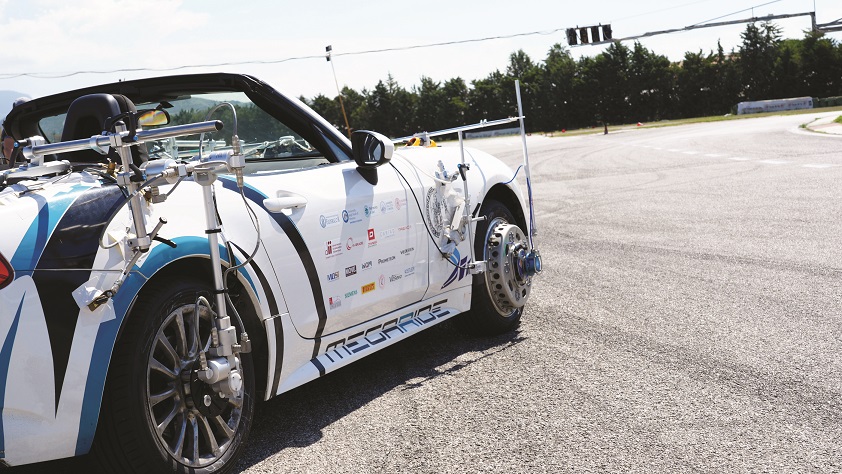
Transferring technologies developed for the extreme demands of motorsport to mass-market applications presents significant challenges. Sakhnevych outlines several hurdles: “One of the main challenges is cost, as motorsport applications rely on high-end sensors and powerful computing. To make these solutions viable for mass production, MegaRide focuses on leveraging existing vehicle sensors and optimising software to run efficiently on standard ECUs.”
He continues, “Scalability is another hurdle, as consumer vehicles operate in diverse and unpredictable conditions. Ensuring robust performance across various road surfaces and driving styles requires extensive validation and adaptive modelling.”
THE AI QUESTION
As artificial intelligence (AI) transforms industries worldwide, MegaRide maintains a measured approach to incorporating machine learning (ML) into its products. The company’s roots in physics-based modelling inform its perspective on AI’s role in tyre simulation.
“MegaRide leverages artificial intelligence and machine learning while staying true to its roots in physics-based modelling,” Sakhnevych says. “Our background in academic research, particularly in mechanical engineering, has shaped our expertise in model-based approaches."
He distinguishes their approach from purely data-driven methods: “Unlike purely data-driven methods, our approach enables prediction without extensive training datasets – simply by parametrising models using well-established physical principles.”

DATA SECURITY CONCERNS
As vehicles become increasingly connected, handling sensitive data securely becomes increasingly important. MegaRide has developed comprehensive approaches to data security, particularly relevant to its onboard sensing technologies.
“MegaRide addresses data privacy and security concerns in tyre technology through a robust combination of encryption, secure data management protocols and role-based access controls,” Sakhnevych explains.
COMPETITION FROM INDUSTRY GIANTS
As a small company operating in an industry dominated by global corporations, MegaRide faces significant competitive pressures. However, Sakhnevych sees advantages in the company’s nimble structure.
THE FUTURE: EXPANSION AND DIVERSIFICATION
Looking ahead, MegaRide plans to continue expanding through organic growth and the development of new ventures within its holding structure.
“The ‘MegaRide holding’ concept will allow us to diversify our strategies, expanding into various sectors we consider strategic,” Farroni explains.
“MegaRide’s models are increasingly used by OEMs, tyre manufacturers and racing teams, and the technological landscape is moving towards a greater adoption of physics-based models like ours, driven by the growing use of real-time simulations.”
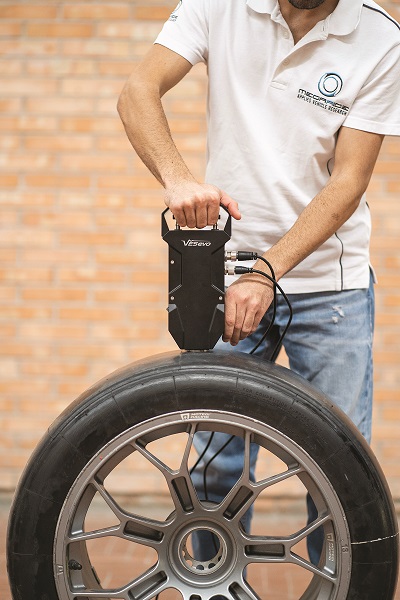 Each company within the holding structure has its strategic direction. “VESevo, originally founded to produce a portable device for motorsport, is now evolving – thanks to key strategic partnerships – into a provider of non-destructive testing solutions and quality control systems for tyres, directly integrated into production lines,” says Farroni. The newest addition, RIDEsense, targets emerging opportunities in vehicle automation. “The increasing onboard computational power of vehicles has led to the creation of a new company, RIDEsense, focused on developing ‘Virtual Sensors’ – real-time algorithms capable of estimating otherwise unmeasurable quantities and providing critical insights for ADAS and autonomous driving systems, which will be pivotal in tackling the mobility challenges of the coming years,” explains Farroni. VESevo’s Genovese describes a similar approach to balancing immediate market needs with long-term innovation: “At VESevo, balancing short-term business goals with long-term research and development is part of our DNA. As an academic spinoff from the University of Naples Federico II and an innovative company, we follow the same path that MegaRide successfully pioneered, transforming cutting-edge research into commercially viable solutions while maintaining a strong focus on technological advancement.”
Each company within the holding structure has its strategic direction. “VESevo, originally founded to produce a portable device for motorsport, is now evolving – thanks to key strategic partnerships – into a provider of non-destructive testing solutions and quality control systems for tyres, directly integrated into production lines,” says Farroni. The newest addition, RIDEsense, targets emerging opportunities in vehicle automation. “The increasing onboard computational power of vehicles has led to the creation of a new company, RIDEsense, focused on developing ‘Virtual Sensors’ – real-time algorithms capable of estimating otherwise unmeasurable quantities and providing critical insights for ADAS and autonomous driving systems, which will be pivotal in tackling the mobility challenges of the coming years,” explains Farroni. VESevo’s Genovese describes a similar approach to balancing immediate market needs with long-term innovation: “At VESevo, balancing short-term business goals with long-term research and development is part of our DNA. As an academic spinoff from the University of Naples Federico II and an innovative company, we follow the same path that MegaRide successfully pioneered, transforming cutting-edge research into commercially viable solutions while maintaining a strong focus on technological advancement.”
He elaborates on their dual-track strategy: “In the short term, we focus on delivering market-ready solutions that meet the immediate needs of our customers, particularly in motorsport and industrial applications. By working closely with teams and manufacturers, we ensure our technology provides tangible value and rapid returns, allowing us to sustain growth and reinvest in innovation.”
Meanwhile, the academic connection remains vital: “Our strong ties to the academic world allow us to act as a ‘bridge’ between research and industry. This close connection enables a constant exchange of knowledge, technology, expertise and skills, accelerating innovation while ensuring our developments translate into real-world impact,” says Genovese.
A MODEL FOR RESEARCH COMMERCIALISATION
MegaRide’s success offers a blueprint for commercialising academic research in highly technical fields. The company has carved out a unique position in the automotive technology ecosystem by maintaining close ties to academia while developing practical market applications.
The company’s ‘researchpreneur’ model provides a case study in technology transfer that may be increasingly relevant as universities worldwide seek to translate research into commercial impact. MegaRide demonstrates that deep technical expertise can be successfully paired with entrepreneurial vision when the right structures and leadership are in place.
As vehicle electrification, automation and connectivity create new challenges for tyre performance and safety, MegaRide’s physics-based approach to simulation and testing positions the company to play an increasingly important role in the future of mobility.
What began as academic research in a Naples university laboratory has evolved into a group of companies pushing the boundaries of what’s possible in understanding the complex interactions between tyres and roads – knowledge that underpins both the thrilling spectacle of motorsport and the mundane safety of everyday driving.
- Society of Indian Automobile Manufacturers
- SIAM
- Rajesh Menon
- Shailesh Chandra
- auto sales
- car sales
- two-wheelers
- three-wheelers
- commercial vehicles
India Auto Wholesales Attain New Highs In FY2025
- by Nilesh Wadhwa
- April 15, 2025

The latest data released by the Society of Indian Automobile Manufacturers (SIAM) show that the Indian automotive industry wrapped up FY 2024-25 with a solid performance, driven by resilient domestic demand, an uptick in exports, and a renewed push toward green mobility.
While the pace of growth varied across segments, the industry overall clocked a healthy 7.3 percent increase in domestic sales, reinforcing its steady recovery trajectory in a post-pandemic economy.
The passenger vehicles segment posted its highest-ever annual sales, breaching the 4.3 million mark – a 2 percent rise over the previous year. Although the high base of FY 2023–24 tempered the growth rate, the segment continued to impress with its scale.
SUVs emerged as the dominant sub-segment, accounting for 65 percent of total PV sales, up from 60 percent last year.
The market responded enthusiastically to new launches and customer demand towards higher ground clearance models. It is also important to note that discounts and promotions kept demand buoyant.
On the exports front, a record 770,000 units were shipped, up 14.6 percent, fuelled by demand from Latin America, Africa and emerging interest from developed markets.
India’s ubiquitous two-wheelers rebounded strongly with 19.6 million units sold, marking a 9.1 percent growth over the previous year. The scooter category led the charge, boosted by improved rural and semi-urban road connectivity.
EV penetration crossed 6 percent, reflecting a growing preference for sustainable options.
Two-wheeler exports rose by 21.4 percent, supported by macroeconomic stability in Africa and expansion into Latin American markets.
The three-wheeler segment on the other hand scaled new highs with 741,420 units sold, a 6.7 percent growth over FY 2023–24. Urban and semi-urban demand for last-mile transport, especially electric models seem to have played a key role.
The commercial vehicles segment posted a slight 1.2 percent decline in annual sales, though Q4 offered a glimmer of hope with a 1.5 percent uptick. Light CVs struggled, while Medium & Heavy CVs (M&HCVs) remained steady. Infrastructure development spurred demand for buses and higher-GVW trucks.
CV exports jumped by 23 percent, indicating global recovery in freight mobility.
In terms of EV sales, the country saw 1.97 million green vehicles sold, up 16.9 percent, with electric two-wheelers seeing a 21.2 percent rise in registrations.
Looking Ahead: Optimism with Caution
The industry body stated that going forward leaders are cautiously optimistic about FY 2025–26. Normal monsoon forecasts are expected to aid rural demand. Recent personal income tax reforms and RBI rate cuts could boost vehicle financing and overall consumer sentiment. Continued export momentum, especially in Africa and neighbouring regions, will offer strategic resilience.
But on the other hand, challenges loom in the form of global geopolitical tensions and evolving supply chain dynamics.
Shailesh Chandra, President, SIAM, said, “The Indian automobile industry continued its steady performance in FY2024–25, driven by healthy demand, infrastructure investments, supportive government policies and continued emphasis on sustainable mobility. Passenger vehicles, two-wheelers and three-wheelers grew in FY2024-25 compared to FY2023-24, but growth rates have been varied across segments. Passenger vehicles and three-wheelers witnessed a moderate growth on account of the high base effect but saw the highest-ever sales in these categories, while the two-wheeler segment registered strong growth in FY2024-25. However, commercial vehicles witnessed a slight degrowth in the FY2024-25, though performance in recent months has been comparatively better. On the exports front, good recovery is seen across all segments, particularly passenger vehicles and two-wheelers reflecting improved global demand and India's growing competitiveness. In FY2024-25, the government of India introduced the PM E DRIVE scheme and PM e-Sewa schemes which underscores the firm commitment of the Government towards promoting sustainable mobility. Looking ahead, the backdrop of stable policy environment, along with recent measures such as reforms in personal income tax and RBI’s rate cuts, will help in supporting consumer confidence and demand across segments.
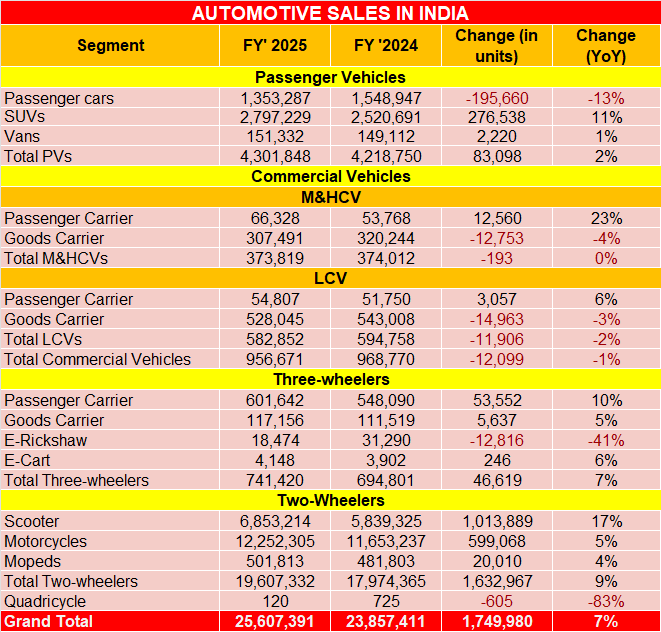
- Kokusai Europe
- Kokusai
- Kazuhiro Murauchi
- tyre
- Markus Winter
- Euro 7
- RFID
- tyre testing
- EV
Kokusai Drives Tyre Testing Into A New Era
- by Sharad Matade & Gaurav Nandi
- April 15, 2025

In an interview with Tyre Trends, Markus Winter, Director of Marketing and Sales at Kokusai Europe, and Kazuhiro Murauchi, Vice President and Head of Engineering at Kokusai Headquarter, share insightful perspectives on the fast-changing reality of tyre testing. With regulatory demands increasing and car technologies developing, Winter shares how the industry responds to new challenges presented by electric vehicles, tighter emission requirements and shifting consumer demands. With Kokusai manufacturing around 130 tyre test machines every year, Winter presents a special point of view regarding the technological advancements and market forces that are determining the future of tyre development and testing practices.
Every nook and cranny within tyre markets across the globe, big or small, is echoing a confluence of old and new practices in the age of new mobility. Attempts to constantly derive upcoming trends are massively influencing stakeholders within the tyre ecosystem as they mull over operational shifts for meeting future demands. The intricate world of tyre testing is also attuning itself to such changes to deliver a seamless transition to end users as progress unfolds.
Markus Winter, Director – Marketing and Sales, Kokusai Europe, contended that tyre testing has surged in recent times as emission norms become stricter and manufacturers methodically formulate new compounds to develop tyres for new-age vehicles.
“Over the past five to 10 years, tyre testing has undergone significant changes driven by regulatory pressures and evolving consumer expectations. In Europe, automotive manufacturers have prioritised high-speed uniformity testing to enhance ride comfort,” noted Winter while speaking exclusively to Tyre Trends.
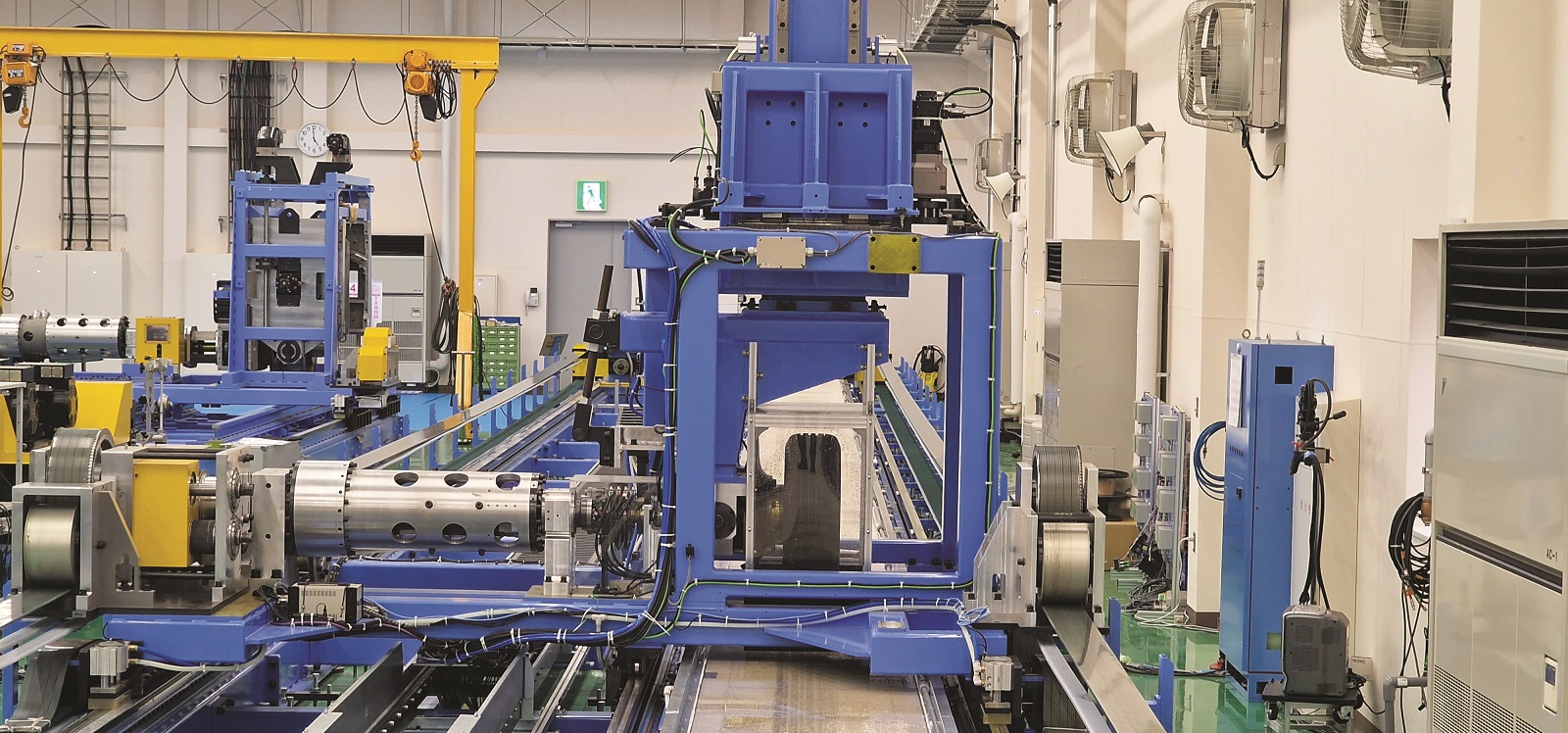 “Simultaneously, there has been a strong industry-wide push towards improving wet grip, not only for new tyres but also for worn ones. More recently, with the introduction of Euro 7 regulations, the spotlight has turned to wear testing. The emphasis is on minimising microplastic emissions and fine dust particles, aligning with broader environmental and health concerns. As regulatory scrutiny intensifies, tyre manufacturers are expected to invest further in wear-reduction technologies, shaping the next phase of innovation in the industry,” he said.
“Simultaneously, there has been a strong industry-wide push towards improving wet grip, not only for new tyres but also for worn ones. More recently, with the introduction of Euro 7 regulations, the spotlight has turned to wear testing. The emphasis is on minimising microplastic emissions and fine dust particles, aligning with broader environmental and health concerns. As regulatory scrutiny intensifies, tyre manufacturers are expected to invest further in wear-reduction technologies, shaping the next phase of innovation in the industry,” he said.
The Japan-headquartered company that produces around 130 tyre testing machines each year believes that Euro 7 regulations will impose stringent limits on wear particle emissions, leading to a major shake-up within the global tyre industry.
The new rules, targeting a 30 percent reduction in particulate emissions, could disqualify a substantial number of current tyre models from original equipment (OE) fitment on new vehicles. While exact figures remain uncertain, industry estimates suggest that up to 50 percent of existing tyre types may be phased out, with some projections even higher. This has placed immense pressure on manufacturers to accelerate testing and compliance efforts.
The initial response from tyre makers will likely focus on outdoor testing, given its simplicity. However, there is growing consensus that standardised drum testing will be essential for consistent evaluation. Over the next one to three years, demand for advanced wear testing solutions is expected to surge, creating significant business opportunities for testing providers.
At the same time, the industry is closely monitoring regulatory discussions and standardisation efforts as test methodologies continue to evolve. Regional differences are evident with Japanese and European manufacturers prioritising distinct approaches to compliance.
While no dedicated testing equipment for wear particle emissions exists yet, there is increasing interest in integrating sensors and analytical systems into existing tyre wear testing frameworks.
As regulations tighten, companies positioned at the forefront of wear testing innovation will be well-placed to capitalise on the shifting market dynamics.
SHIFTING DYNAMICS
The rise of electric vehicles (EVs) is fundamentally reshaping the tyre testing industry. With EVs requiring bigger, heavier tyres and delivering significantly higher torque, testing methodologies must adapt to these changing dynamics.
“With EVs demanding bigger, heavier tyres and generating higher torque, the industry must adapt. Our testing concepts are divided into two key areas including force and moment testing, which accounts for the torque and velocity changes and endurance testing such as tyre wear assessments. While high torque isn’t a requirement for endurance testing, these machines must still meet rigorous performance standards,” noted Winter.
Another major transformation is the accelerated development cycle of new tyres. Previously, a single tyre model would take six months to a year to develop, but manufacturers are now introducing new models every three months. Each iteration features different materials, tread designs and wear characteristics, increasing the need for highly flexible and efficient testing solutions. “This shift creates a greater demand for flexible, high-throughput testing solutions. We’ve opened a technical centre in Tokyo, where manufacturers can evaluate new tyre designs and test methods in real time,” informed Murauchi.
Smart tyre technology is also influencing the testing landscape. According to the executive, tyre testing involved manually recording data such as temperature, pressure and wear characteristics in the past. Today, with the integration of tyre pressure monitoring system sensors and RFID tracking, data collection is becoming increasingly automated. These advancements allow for real-time analysis and improved accuracy in performance evaluations. Although not all tyres currently include RFID technology, the trend is clearly moving towards fully automated data integration.
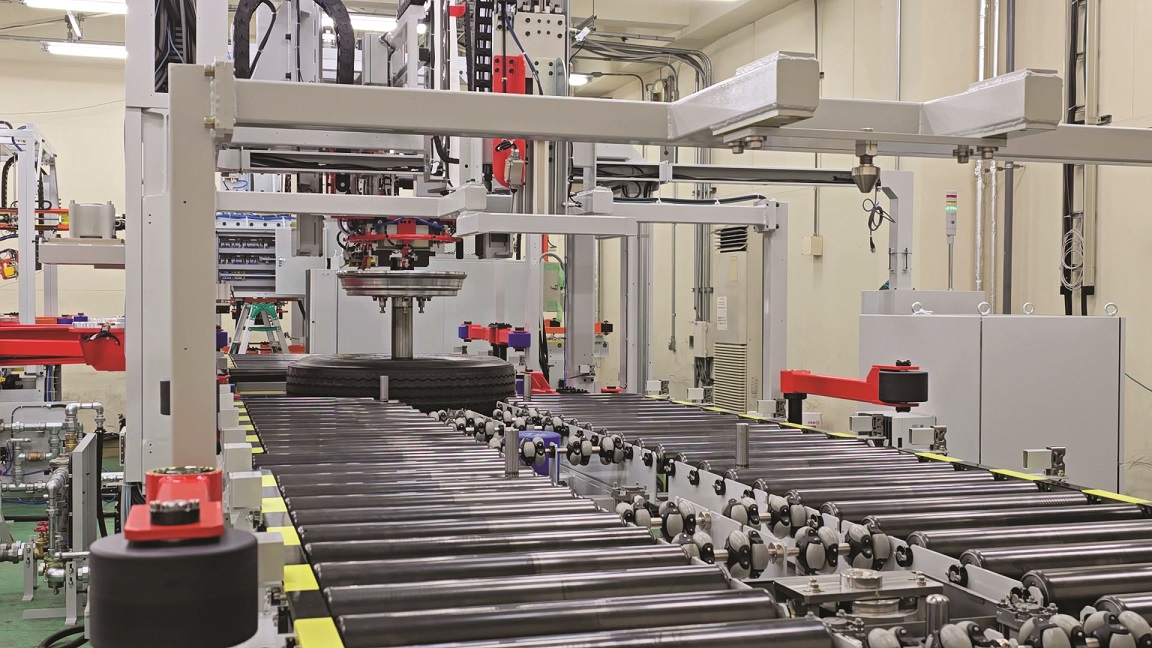
High-speed uniformity testing is another area undergoing transition. “Demand for this type of testing peaked several years ago, particularly for performance and luxury vehicles. However, as EVs continue to grow heavier, the impact of uniformity variations at high speeds has diminished. A vehicle that is 500–800 kg heavier places less emphasis on tyre uniformity, making it less of a critical factor for the driver. Despite this trend, high-speed uniformity testing remains essential in laboratory settings, where it provides valuable insights into braking performance, torque application and wet grip. While production-line high-speed testing has seen a slight decline, laboratory testing remains a necessary step in ensuring that EV tyres meet safety and performance standards,” noted Winter.
Investment trends in the industry also reflect this evolving landscape. Many tyre manufacturers are opting for outdoor testing because it requires lower upfront investment. Outdoor tests can be conducted by hiring test vehicles and drivers rather than investing in costly laboratory equipment.
Nonetheless, core testing parameters such as uniformity, geometry and balance will remain essential despite the shifts, noted the executive.
INTELLIGENT MACHINES
Winter noted that artificial intelligence (AI) will also play a significant role in tyre testing, particularly in analysing wear test results. While machine builders focus on developing equipment that ensures precise and reproducible testing conditions, AI is increasingly being used in areas like shearography testing.
“For now, AI’s role in direct test result analysis remains limited as interpreting the data largely falls to manufacturers. Testing machines must guarantee consistent results under identical conditions ensuring uniform abrasion rates. However, manufacturers leverage AI to assess tread compounds and wear conditions, an area beyond the machine builder’s core business,” said Murauchi.
Software is also becoming increasingly important in tyre testing, though integration varies by manufacturer size. Major companies prefer to use proprietary quality tools and focus on seamless data integration.
Smaller manufacturers, however, seek guidance on handling test data, creating opportunities for collaboration with software firms.
Despite handling vast amounts of test data, the company is not pursuing a business model centred on data analytics or test services. Some competitors have expanded into internal testing and data-driven solutions, but this firm remains committed to machine building.
UPGRADING SYSTEMS
Customers today are increasingly seeking testing machines that can be upgraded rather than replaced after 15–20 years. Their expectation is to minimise costs while extending the machine’s lifecycle, though upgrading a machine directly in a customer’s plant at minimal cost is not always feasible. Despite this, manufacturers are focusing on designing equipment that allows for easier upgrades over time.
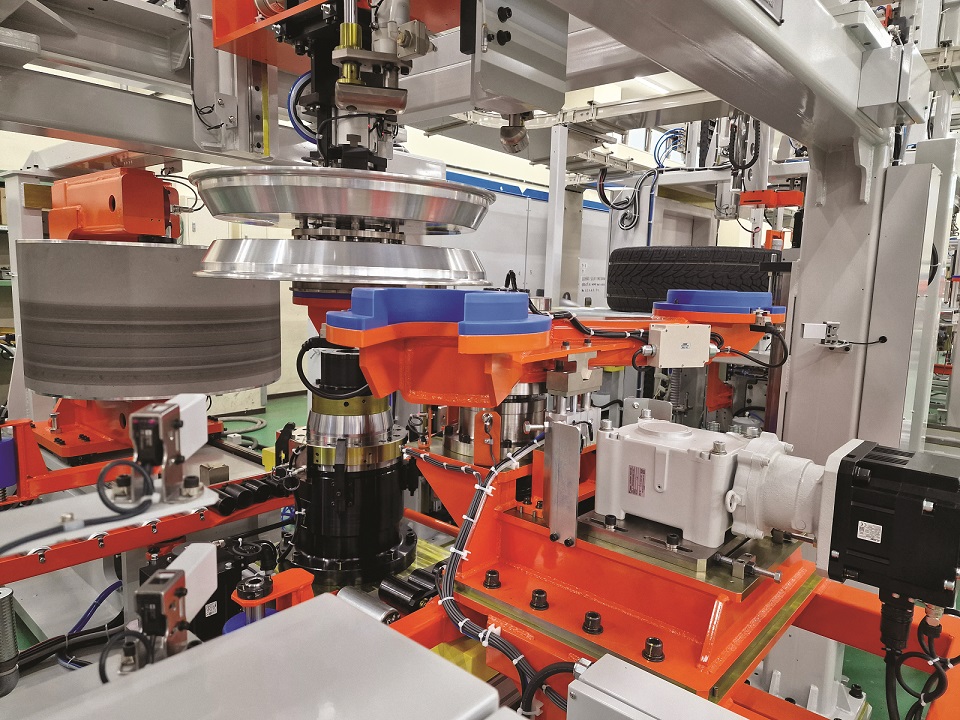 “One key aspect of this shift is the move away from hydraulic systems. All of our testing equipment is now fully electric, whether it is a compression tester, steering tester or vibration tester. This transition was influenced by Japan’s experience with earthquakes, particularly the 2011 disaster that led to power shortages. Following the Fukushima incident, the Japanese Government required manufacturers to reduce power consumption by 15 percent. Unlike hydraulic systems, which require stable oil temperature and pressure, our fully electric machines can be turned on and off instantly, making them more energy-efficient and reducing operational downtime,” averred Murauchi.
“One key aspect of this shift is the move away from hydraulic systems. All of our testing equipment is now fully electric, whether it is a compression tester, steering tester or vibration tester. This transition was influenced by Japan’s experience with earthquakes, particularly the 2011 disaster that led to power shortages. Following the Fukushima incident, the Japanese Government required manufacturers to reduce power consumption by 15 percent. Unlike hydraulic systems, which require stable oil temperature and pressure, our fully electric machines can be turned on and off instantly, making them more energy-efficient and reducing operational downtime,” averred Murauchi.
The focus on energy efficiency extends to long-term improvements in machine performance. Over the years, the company has developed systems that significantly reduce electricity consumption. Since tyre wear testers run for long durations daily, its energy usage directly impacts operating costs.
“We developed an innovative drive concept that provides force-synchronised control of the drum and test tyre, allowing tyre slip to be precisely applied via a highly dynamic torque-on-demand system. Combined with our specially adapted load case collective, this new system achieves a nearly 90 percent reduction in energy consumption compared to conventional hydraulically driven wear testers. As a result, we can dramatically reduce the running cost for our customers. The first sets of these advanced systems have already been successfully implemented at a major Japanese company, demonstrating the effectiveness of our energy-efficient approach,” revealed Winter.
REGULATORY CHANGES
Regulations play a critical role in shaping the tyre testing industry as manufacturers continuously adapt to new requirements. Winter anticipates significant regulatory changes, particularly in Europe and Asia, over the next four to five years that will impact tyre testing and development.
“One of the key upcoming regulations is related to tyre wear. There is increasing focus on how quickly tyres wear out and how that affects road safety and environmental impact. In addition to wear, the wet grip performance
of tyres is expected to come under stricter regulations, pushing manufacturers to provide more transparent data on its products’ real-world performance. Another area of growing interest is tyre lifespan, particularly for commercial truck and bus tyres. Customers are becoming more focused on the overall service life of tyres rather than just wear resistance, which means testing procedures may need to evolve,” said Winter.
“Tyre safety is another area where regulations are expected to tighten. In the past, tyre testing has primarily focused on new tyres, but we foresee that future regulations may require testing on worn tyres as well. This is because a new tyre performs optimally, but its behaviour can change significantly after use. Factors such as tread depth, air pressure variations and temperature fluctuations influence how a tyre performs over time, and regulators may demand better data on these aspects,” he added.
Currently, tyre testing is done under standard conditions, but in reality, tyres are used in extreme temperatures ranging from sub-zero to scorching heat. With the rise of autonomous driving, there is an increasing need for tyres to be tested in a variety of weather conditions.
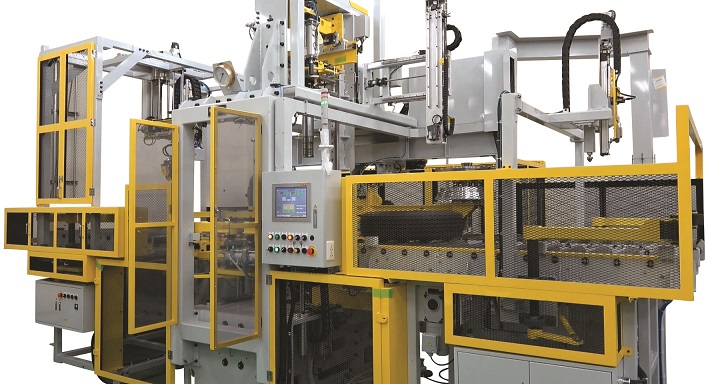
Future regulations may require more comprehensive testing to ensure that tyres perform predictably across different temperatures, humidity levels and road conditions. Autonomous vehicle systems will likely rely on detailed tyre performance data to make real-time driving decisions, which could drive the development of new testing methodologies.
FOOTPRINT
Asia remains the strongest market for the company, where it has established itself as the market leader with deep customer relationships. While competition is intense in Europe, the company has tested its machines with premium manufacturers and is adapting its equipment to meet the specific needs of different tyre makers.
The company is deploying pilot projects across various segments including passenger car and truck tyres to expand in Europe. These initial installations allow for extended testing before securing approvals to participate in larger procurement processes. In contrast, the wear tester segment is less competitive with only a few global suppliers, positioning the company as a key player with extensive collaborations worldwide. The focus now is on strengthening technical partnerships, installing pilot units and integrating its solutions within the operational frameworks of major tyre makers.
The company has set a target to expand capacity to 150 units per year, potentially by the end of 2025. While European markets face margin pressures, the company’s challenge lies in scaling up production in Asia, US and Europe to meet growing global demand.








Comments (0)
ADD COMMENT